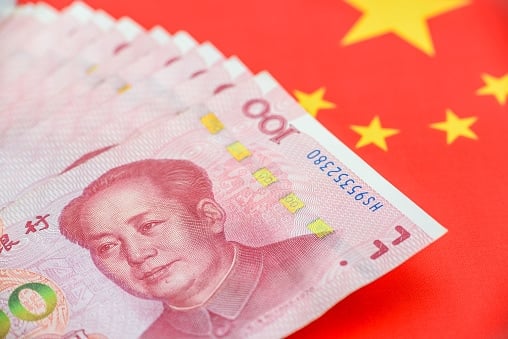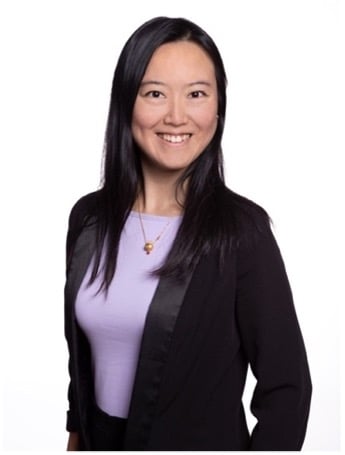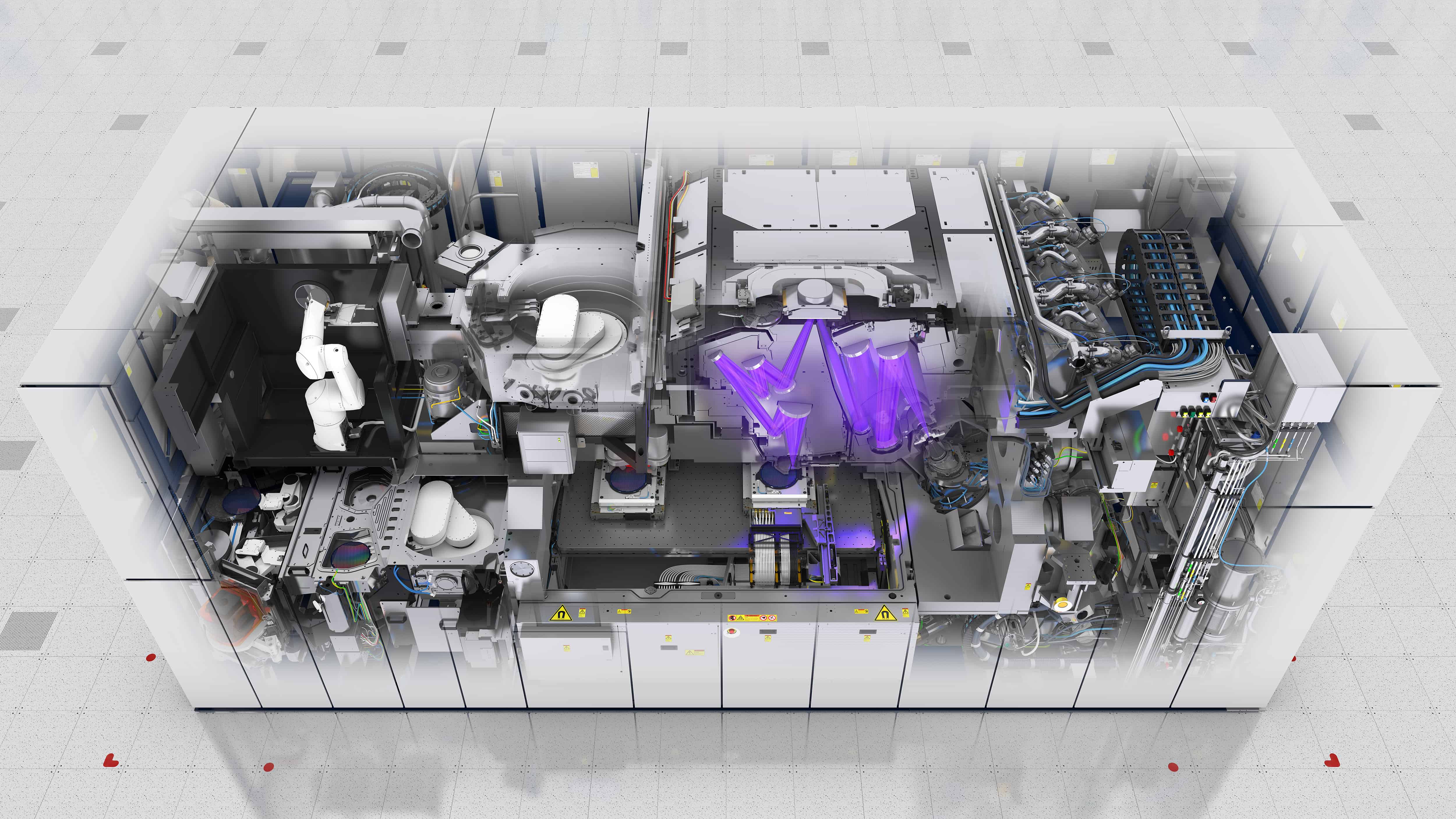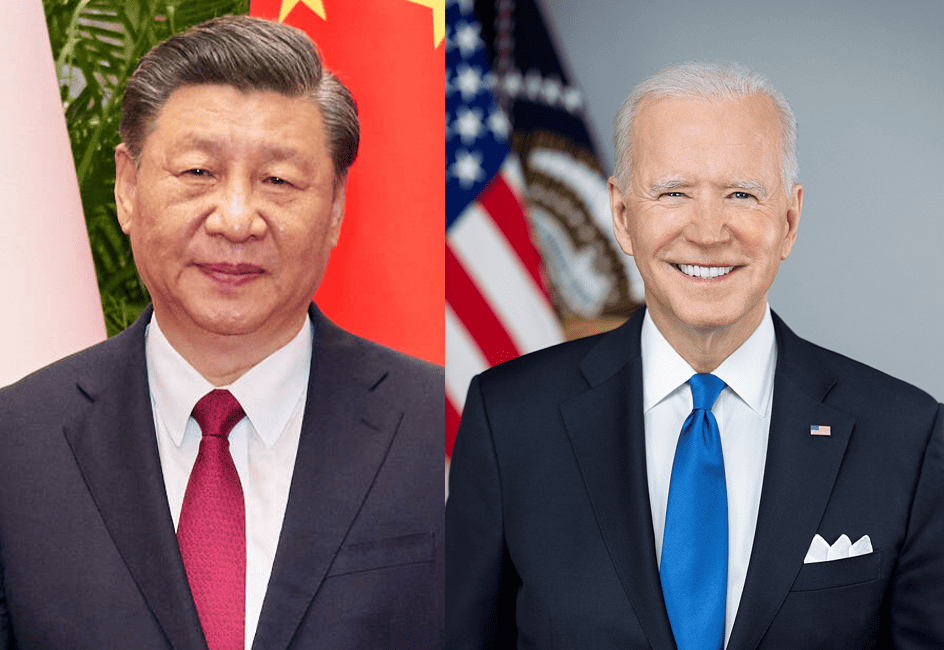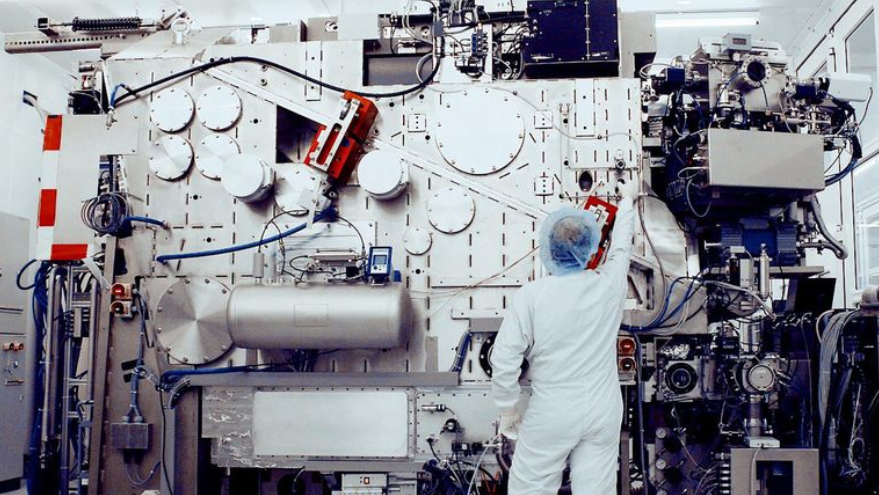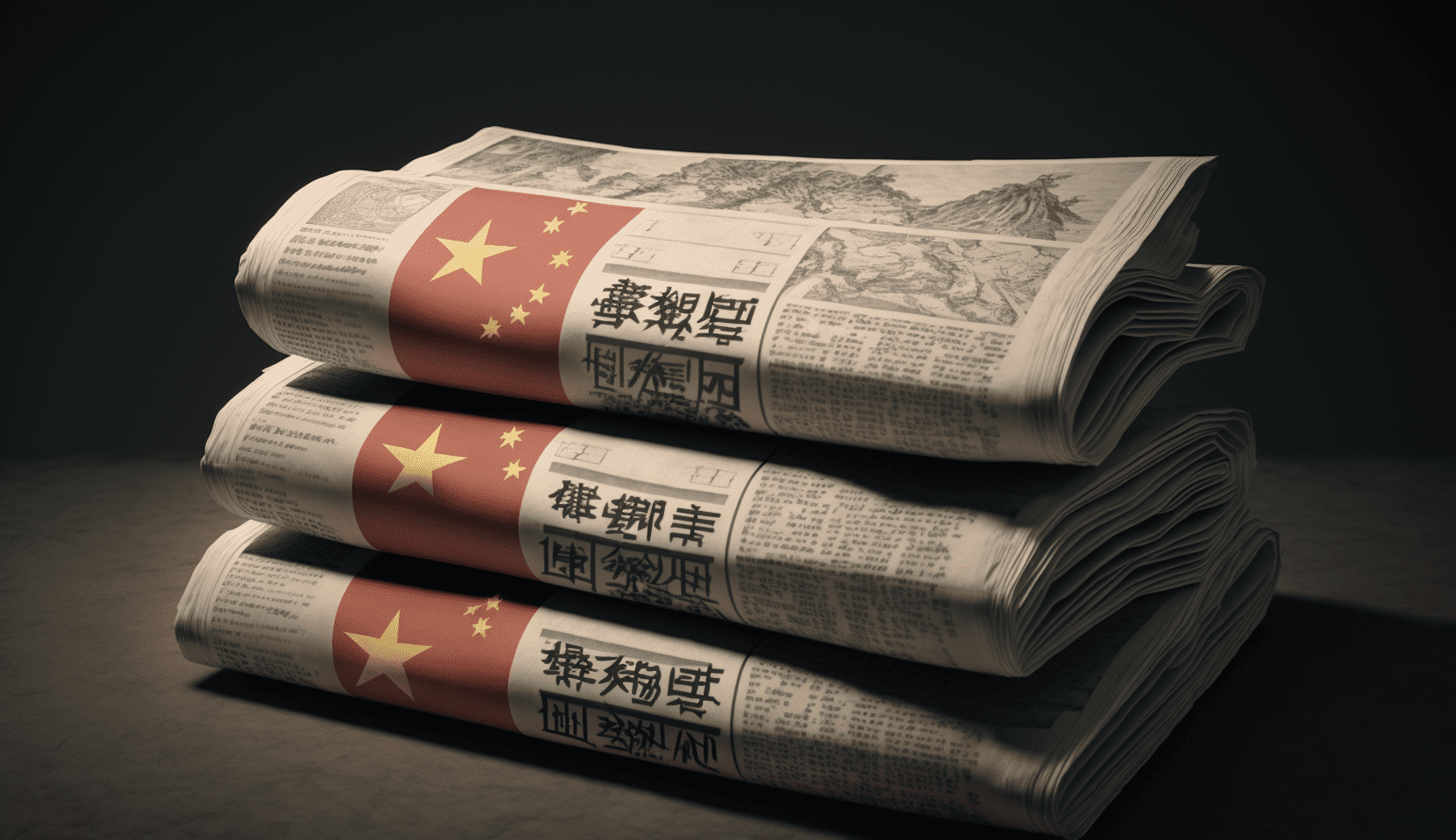
Why compare?
How are an economic China and its bilateral relations with Europe presented in Dutch news? Would it be different from English news reports? If so, then in what way?
This is relevant for business leaders and entrepreneurs in the Eindhoven Brainport region because business relations between Chinese and Dutch high-tech companies have grown recently. Meanwhile, such business relations in the high-tech industry also face increasingly turbulent times in a geopolitical context. The example of the ongoing chip export control to China unfolds the geopolitical tension and its potent influence on Sino-Dutch business relations. The challenge of managing these relationships is relevant for many local companies with R&D investments. By looking into multiple news perspectives, this article identifies the main themes and challenges when it comes to engaging with China as a partner, competitor, and rival. It prompts the question of to what extent the similarities and differences emerge between English and Dutch media narratives on China-EU relations.
Witnessing significant policy changes and government gatherings in China, the lifting of Covid-Zero policies, the 20th Party’s Congress, and the Two Sessions, the past half year shows Chinese policymakers are more than determined to revive the country’s economy and restore its diplomatic and trade relations with partner countries. Numerous news reports have portrayed a picture of a more assertive China reopening to the world. In terms of China-EU relations, the past months also see more diplomatic dialogues and meetings among world leaders, including German Chancellor Olaf Scholz’s visit to China in November last year, the recent visits to China from French President Emmanuel Macron and European Commission President Ursula von der Leyen.
On the one hand, Scholz and Macron’s visits to China were accompanied by business delegations to strengthen trade relations with China. On the other hand, Von der Leyen, in her visit, demonstrated a much more assertive attitude on “de-risking” Europe’s economic ties with China by acknowledging imbalances in China-EU relations. These meetings have been bundled with diplomatic messages and economic goals, reflecting mixed sentiments on the future outlook of China-EU bilateral relations.
News reports on topics of China-EU relations provide business professionals insights on market sentiments, trade relations, novel developments, and relevant policy changes between China and Europe and reflect the perspectives and interests of the news organizations and the target readers. Comparing multiple news outlets in both Dutch and English and taking a holistic view of the news content through a longer time span, gives our readers a more objective and nuanced perspective.

What to compare?
Taking on a task to explore the similarities and differences in terms of Dutch and English news reports on China-EU bilateral relations, this project examines six Dutch newspapers and five selected news outlets in English.
Together with a graduation team at Fontys School of Business and Communication, we have in total gathered 126 Dutch news articles and 230 English news articles for comparison within a time frame from October 2022 to March 2023.
Our study collects news articles, co-eds, and opinion pieces from selected news organizations. The selection on this time span lies in the major transitions of China’s coping with Covid-19 travel restrictions and the major political and economical decisions and shifts brought upon since the 20th Party Congress held in October 2022. Much news coverage focuses on China’s bilateral relations with the EU after the government lifted the Covid travel restrictions and stabilized its domestic political structure.
The selection of the 126 Dutch newspaper articles is based on the overall national circulation and their attention to international news. Based on the widest national spread, the papers for the Netherlands are Trouw, De Volkskrant (VK), Algemeen Dagblad, NRC Handelsblad (NRC), Het Financieele Dagblad, De Telegraaf.
| Newspapers | Trouw | De Volkskrant | Algemeen Dagblad | NRC Handelsblad | Het Financieele Dagblad | De Telegraaf |
| Number of articles | 23 | 19 | 16 | 29 | 28 | 11 |
The selection of the 230 English articles is based on their general attention to international relations, financial matters, and particularly to China through business perspectives. The selection of the English media organizations results in newspapers The Wall Street Journal, Financial Times, The South China Morning Post, and news agencies Bloomberg News and Reuters. Articles were retrieved through their official media websites based on keywords. We then cross-examine and eliminate the overlapped results. All articles were selected in which featured China as their main focus.
| News outlets | Wall Street Journal | Financial Times | Reuters | Bloomberg | The South China Morning Post |
| Number of articles | 23 | 70 | 50 | 53 | 34 |

Thematic hierarchy
To look into the perspective from which the Dutch newspapers cover our topic and whether there is a significant difference to the English news outlets, we categorized the articles based on the themes they most frequently involve when discussing the context of China-EU bilateral relations. The major thematic categories result in 1) China’s economic policies, 2) international travel, 3) international businesses in China, 4) Chinese businesses abroad, 5) new energy and a green transition, 6) geopolitics and export restrictions, 7) diplomatic activities, and 8) others.
To avoid overlap, we define these categories as such:
- China’s Economic policies include articles on the Chinese government’s economic decisions, trade policies, and China’s role in the global supply chain.
- International travels include articles on Chinese tourists’ international travels in the post-covid times and/or on how Chinese tourists may impact the tourism industry in Europe.
- International businesses include articles on international businesses and investors with interests, customers, partners, and/or businesses in the Chinese market.
- Chinese businesses abroad include articles on the merging and acquisitions of Chinese companies to European companies, China’s foreign direct investments in European businesses, and Chinese companies’ technological research and development outside China.
- New energy and green transition include articles on the competition or collaboration between the EU and China on new energy use, particularly including the discussion of lithium resources.
- Geopolitics and export restrictions include articles on geopolitical challenges and discussions for EU and China trade relations, the competition between Chinese businesses and EU businesses, and semiconductor export controls to China.
- Diplomatic activities include articles on high-level government visits, communications, and exchanges among top leaders, envoys, and diplomats between the EU and China.
- Others (articles that do not fit in the above categories)
Our results are presented in the figures below through systematic coding procedures and reliability testing.
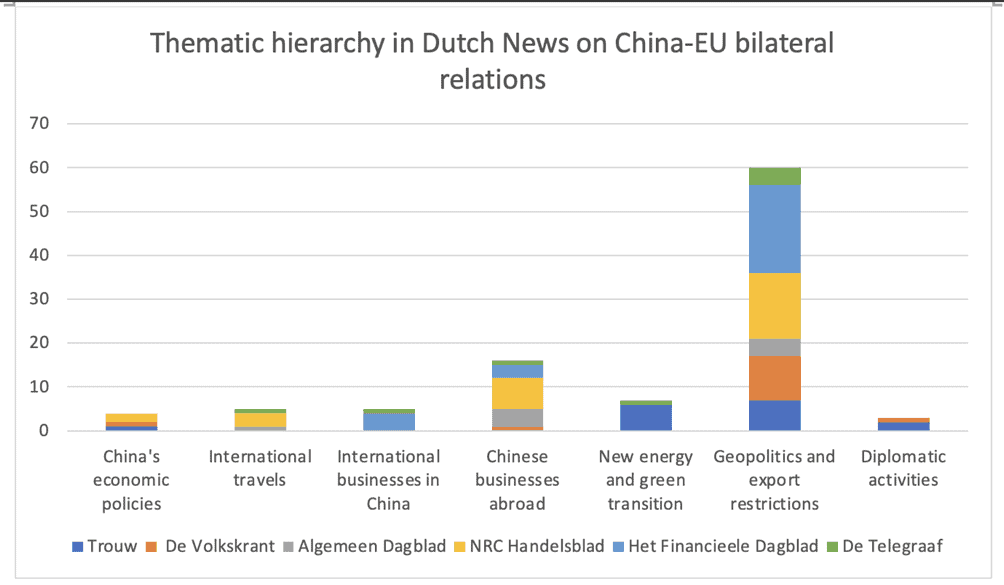
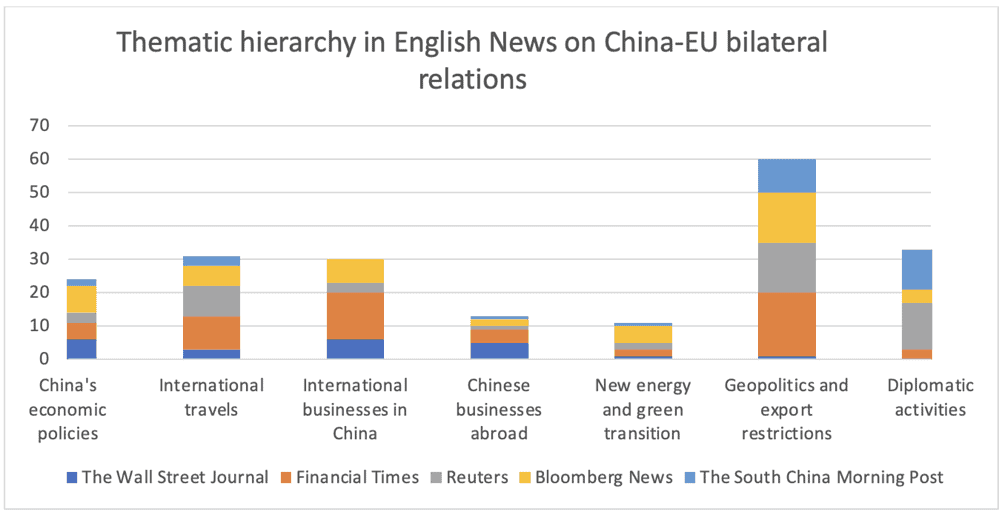
The results suggest the followings:
- Both Dutch and English news show a strong focus on geopolitical challenges and export restrictions to China. Through careful reading, the articles from this category adopt negative tones on China-EU bilateral relations. Important sub-topics in this category include the role of the US in rolling out export controls to China and China’s relation with Russia as well as its stance in the Russian-Ukraine war.
- Diplomatic activities receive significantly less coverage in Dutch news than in English news. The content from this category demonstrates much positive attitude reflected from the governmental officials in the reports.
- Both Dutch and English news show an emerging category of new energy and green transition. Articles on this topic tend to adopt neutral tones and discuss the social relevance of new energy for both China and Europe, the ongoing competition, and possible collaborations between China and Europe.
- Chinese businesses with international activities and influences receive relatively more coverage in the Dutch news than in the English news.
- The topic of China’s economic policies receives relatively more coverage in English news than in Dutch news.
- Dutch and English news show relatively equal distributions on international travel and businesses.
Bearing in mind the limitations of the research project, we find our research results reflect the general perspectives and tones at the time in the Dutch news coverage. Despite the diplomatic activities and efforts between China and the EU, the news coverage generally paints a murky picture of the China-EU bilateral relations in the near term. We find the reports and discussions of technological innovation, development, and competition are, in fact, undermined and dominated by the discussions of geopolitical challenges. Nevertheless, reports on international trade between China and Europe suggest strong wills for business to continue. The topic of new energy and the green transition is likely to receive increasing attention in the news. It would be worth continuing to look into the different reporting methods per Dutch newspaper in our future research project.
